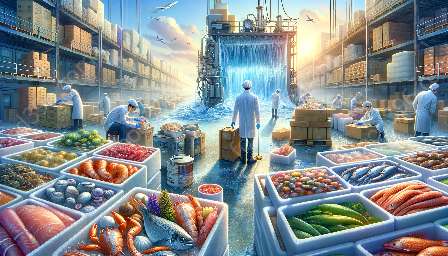Seafood quality assessment during storage is a critical aspect of ensuring the freshness and safety of seafood products. Proper storage and packaging play a crucial role in maintaining the quality of seafood, especially in terms of flavor, texture, and safety for consumption. This topic cluster will delve into the various aspects of seafood quality assessment during storage, exploring its compatibility with seafood packaging and storage, as well as its relationship with seafood science.
The Importance of Quality Assessment
Before diving into the specific methods and techniques for assessing seafood quality during storage, it is essential to understand why this process is of utmost importance. Once seafood products are harvested or processed, they are highly perishable and susceptible to spoilage, primarily due to microbial growth, enzyme activity, and oxidation. Inadequate storage conditions can lead to the deterioration of product quality, resulting in changes in taste, texture, and nutritional value, as well as the potential development of foodborne illnesses.
Seafood Packaging and Storage
Seafood packaging and storage are closely intertwined with quality assessment, as the effectiveness of packaging and storage conditions directly impacts the overall quality and shelf life of seafood products. Packaging methods such as vacuum sealing, modified atmosphere packaging (MAP), and freezing can significantly influence the preservation of seafood quality. Additionally, proper storage temperatures, humidity levels, and handling practices are crucial factors that contribute to maintaining seafood freshness and safety.
Effective Packaging Technologies
In recent years, there have been significant advancements in seafood packaging technologies aimed at extending shelf life and enhancing product quality. Innovations such as active packaging, which involves the incorporation of antimicrobial agents or oxygen scavengers into packaging materials, have shown promise in inhibiting microbial growth and reducing spoilage. Furthermore, intelligent packaging systems equipped with sensors and indicators provide real-time monitoring of storage conditions, offering improved traceability and quality control.
Seafood Science and Quality Assessment
Seafood science encompasses a broad spectrum of disciplines, including biochemistry, microbiology, and sensory evaluation, all of which are integral to the assessment of seafood quality during storage. Various analytical methods, such as gas chromatography, high-performance liquid chromatography, and molecular techniques, contribute to the identification and quantification of deteriorative processes in seafood. Moreover, sensory analysis plays a vital role in evaluating attributes such as odor, flavor, and texture, providing valuable insights into consumer acceptability and product quality.
Latest Methods and Technologies
Advancements in analytical instrumentation and processing technologies have enabled the development of rapid and non-destructive methods for assessing seafood quality. Spectroscopic techniques, including near-infrared spectroscopy and fluorescence spectroscopy, offer efficient means of monitoring biochemical changes in seafood products. Additionally, molecular-based approaches, such as polymerase chain reaction (PCR) and DNA sequencing, contribute to the detection of spoilage microorganisms and the authentication of seafood species.
Ensuring Freshness and Safety
Ultimately, the goal of seafood quality assessment during storage is to ensure both freshness and safety for consumers. From the moment seafood products are harvested to their distribution and consumption, rigorous quality control measures must be in place to mitigate risks associated with spoilage and contamination. By leveraging cutting-edge technologies and comprehensive scientific knowledge, the seafood industry can uphold stringent standards and deliver premium-quality products to the market.

